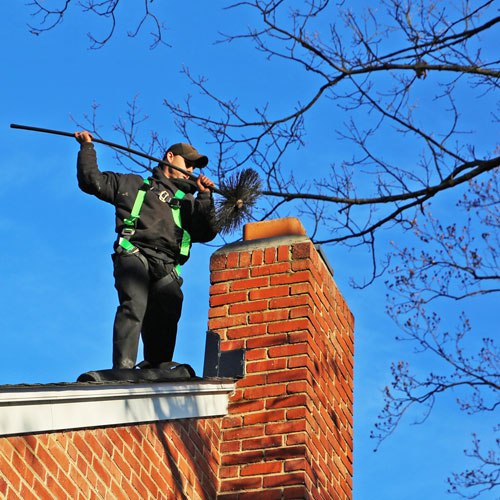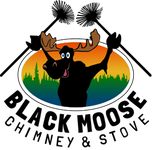The Holiday season is the favorite time of year for fireplaces. As temperatures continue to drop, you might burn a fire every day in order to supplement your central heating system, or your fireplace may be your main source of heat. No matter how often you light it or for what purpose, your fireplace is first and foremost a fire. It is dangerous and can be devastating if the right precautions aren’t made, and if it isn’t used properly.
Safety Tips

- Make sure it’s ready for a fire.
Before lighting the first fire of the season, the chimney system should be assessed for safety. Your chimney may have worked well last year, but there may be hidden hazards that you cannot see—water damage from spring, a missing chimney cap or shifted flashing because of high wind, even animals can cause unseen damage when they’re allowed into your system to nest. Schedule an annual inspection and you can rest assured that your fireplace and chimney are ready for a fire. By having the chimney cleaned as well, it can be more efficient, saving you money and fuel. You can schedule a chimney sweep during the same appointment as your inspection! - Install smoke alarms and carbon monoxide detectors.
You should check and change the batteries in your smoke alarms regularly. If you don’t have smoke alarms installed, do so as soon as possible. Smoke alarms keep families safe, whether from kitchen fires, dryer vent fires, or flue fires. Installing a carbon monoxide detector is necessary to prevent carbon monoxide poisoning because you cannot see carbon monoxide intrusion happening, and it can be a fatal poisoning. There are 10,000 carbon monoxide-related injuries per year. - Burn only proper fuel.
Wood should be cut and seasoned (dried) for 3-6 months before burning. Seasoned wood will burn cleaner than green wood, will help your chimney work more efficiently, will produce less ash and pollution, and will be easier to light and keep burning at the desired temperature. Burning other items (paper, clothes, pine needles, leaves) can lead to flue fires because these items are so light they rise up the chimney aflame. If you have a gas fireplace, you should never burn other items in your fireplace. - Keep decorations away from the fireplace.
When you’re setting up your tree, keep it a safe distance from the hearth opening. If the tree were to fall toward the fire, it should be far enough away that it doesn’t fall into or near the flames. You should regularly water trees that are real, because a dry Christmas tree can become a dangerous fire hazard. Garland, stockings, and lights should be fastened securely on the mantel. Be sure to remove hanging stockings before lighting your fire. - Practice fireplace safety with your family.
Never leave the fire unattended, and don’t leave children alone with a fire. Teach children to stay away from the fireplace even when it isn’t lit. Coals and ashes in a fireplace can stay hot for up to 24 hours once a fire is out! Make an escape plan with your family with two ways out, and practice it. Utilize accessories like long-handled tools and fire screens for added protection against burns.
Questions? Ready for an Appointment? Contact Us Today!
We are South-Central New Hampshire’s #1 choice for chimney, fireplace & masonry services. Our team is National Chimney Sweep Guild (CCP/NCSG) certified and well-trained in current industry standards and procedures. We are ready to assist with inspections, repairs and installations for chimneys, fireplaces, wood and pellet stoves and more.
Contact Form
"*" indicates required fields


